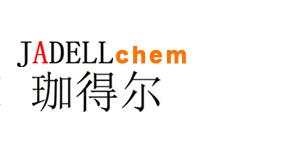Recombinant Mouse Heparin-Binding EGF-like Growth Factor 在创伤愈合、心肌肥厚、心脏发育和功能等方面发挥重要作用。
Synonyms
rMuHB-EGF; Proheparin-binding EGF-like growth factor; HBEGF; DTR ; 重组小鼠肝素结合 EGF 样生长因子
Species
MouseSource
E. coli Accession
Q06186 Gene ID
15200 Molecular Weight
Approximately 9.8 kDa AA Sequence
DLEGTDLNLF KVAFSSKPQG LATPSKERNG KKKKKGKGLG KKRDPCLRKY KDYCIHGECR YLQEFRTPSC KCLPGYHGHR CHGLTL Biological Activity
The ED50 is <1 ng/mL as measured by murine Balb/c 3T3 cells, corresponding to a specific activity of >1.0 × 106 units/mg. Appearance
Lyophilized powder. Formulation
Lyophilized after extensive dialysis against 10 mM PB, 500 mM NaCl, pH 7.4. Endotoxin Level
<1 EU/μg, determined by LAL method. Reconstitution
Reconstitute the lyophilized recombinant Mouse Heparin-Binding EGF-like Growth Factor (rMuHB-EGF) to 0.1-1.0 mg/mL using sterile distilled water or aqueous buffer containing 0.1% BSA. Storage & Stability
Lyophilized recombinant Mouse Heparin-Binding EGF-like Growth Factor (rMuHB-EGF) is stored at -20°C. After reconstitution, it is stable at 4°C for 1 week or -20°C for longer. It is recommended to freeze aliquots at -20°C or -80°C for extended storage. Shipping
Room temperature in continental US; may vary elsewhere. Background
Heparin-binding epidermal growth factor-like growth factor (HBEGF) is a heparin-binding member of the EGF family. It is a potent mitogen and chemotactic factor for fibroblasts and smooth muscle cells. As with other EGF family members, HB-EGF binds and activates EGF receptors 1 and 4. HB-EGF has been shown to stimulate the growth of a variety of cells in an autocrine or paracrine manner and to be involved in stromal proliferation. HB-EGF is also a potent inducer of tumor growth and angiogenesis[1]. |



